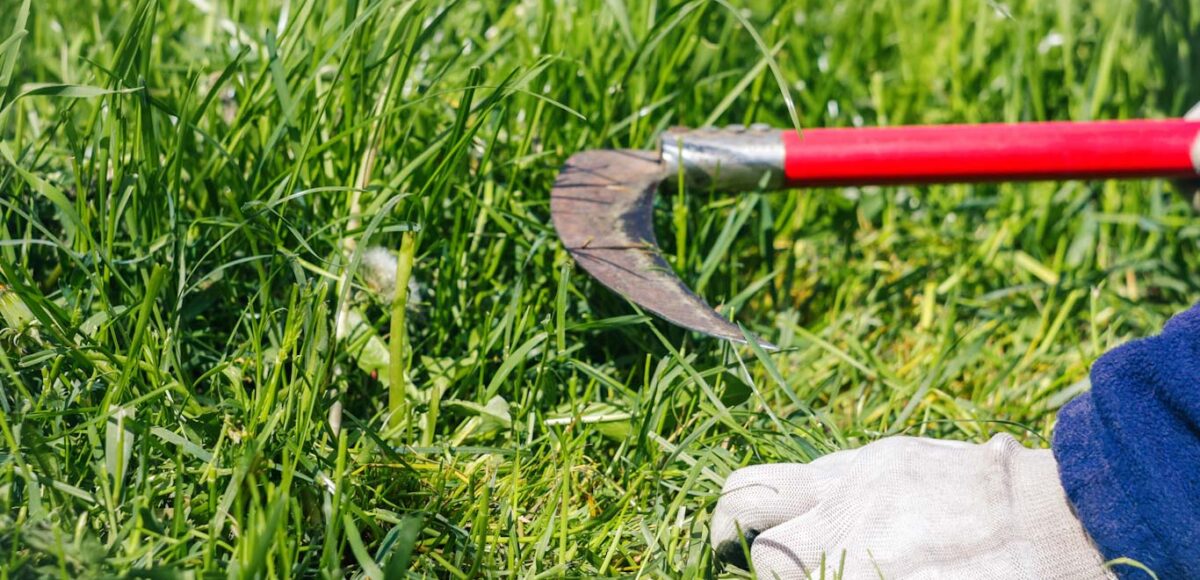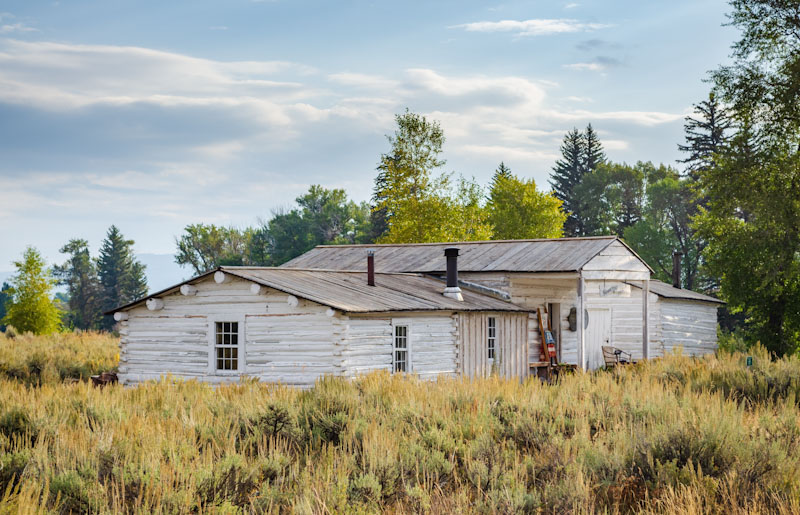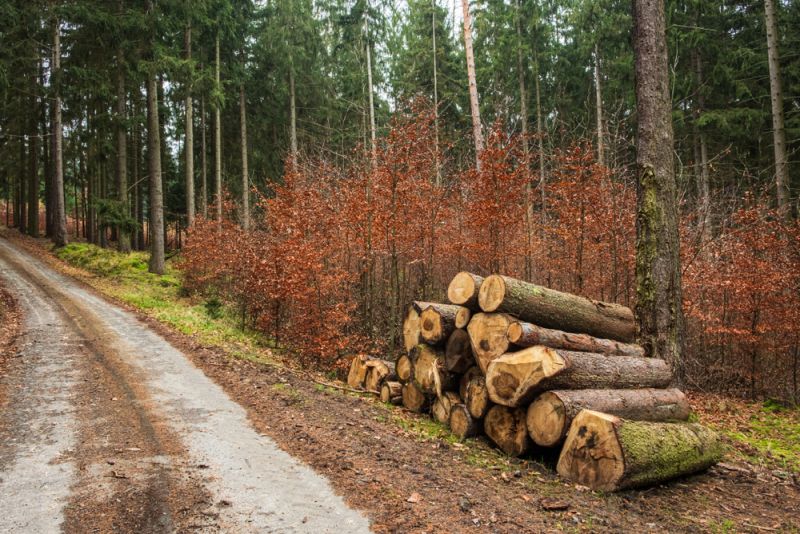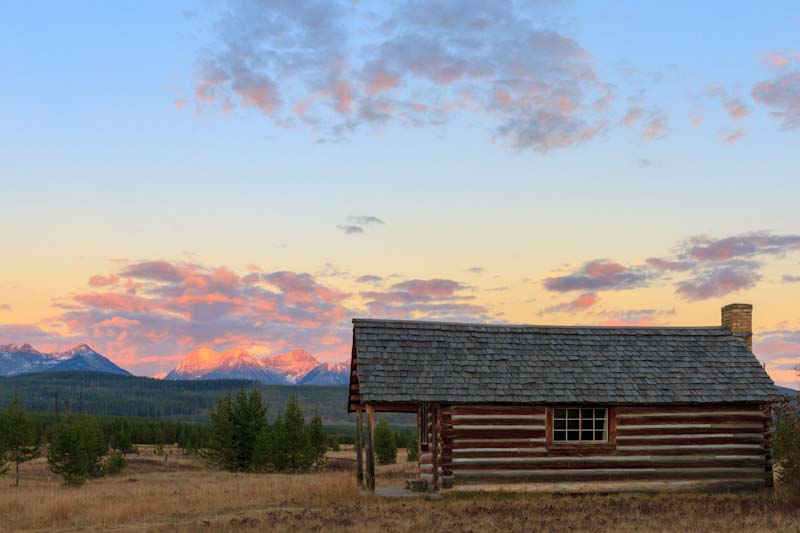As I sit here in my office, the grass in my backyard is topping three feet. That’s not normal for me, as I like to keep it looking at least somewhat decent. But there are mitigating circumstances. Up until about a month ago it hadn’t rained at all this year, meaning that I had dirt, not grass. Then it started raining like crazy, which the grass (and the weeds) has taken advantage of. Between the near-daily rains and being out-of-town every weekend, I’ve lost the battle and my yard looks more like a jungle, than a lawn.
Like just about everything else I see, this got me thinking about that grass in a survival situation. I keep some gasoline on-hand; but not enough for a long-term survival situation. Besides, gasoline doesn’t keep well over the long haul and if I was in that long-term survival situation, I’d have much more important things to do with what gasoline I do have. So, my lawn would grow, just as it has now.
Okay, so quit looking at the grass as a problem and start looking at it as a resource. Granted, grass isn’t much of a resource, but it’s renewable and plentiful. Many of us have much more of it than we’d like to. All it takes is a little bit of imagination in how to use it. What makes it a great resource for survival situations is that it will grow whether you want it to or not, just as long as you have rain. So, it’s a resource that you can grow, without any effort, other than cutting it. Considering the amount of work that we’ll all be doing just to survive, it’s nice to be able to encounter resources that we can use which will not require a lot of extra work.
Feed For Animals
The first and most obvious use of that grass is as feed for animals. Goats and rabbits both eat lots of grass as part of their natural diet. If you’re currently feeding them some other food, you’ll want to gradually shift over to grass, giving their digestive system time to adjust; but once it does, both can live off of a diet of mostly grass. Chickens will eat grass too; although they can’t survive on a diet of grass alone. Still, allowing chickens to forage in your lawn will give them the opportunity to find bugs, a necessary source of protein.
Compost
Grass clippings are one of the more important parts of compost, because of their high nitrogen content. While you don’t want to make compost of grass alone, you definitely want to include it in your compost bin or pile. Adding grass to compost also moves necessary nutrients from other parts of your yard to your garden, where you need it the most.
To get the most out of the grass you put in your compost, you’ll want to cut it, rather than leaving it three feet long, like mine is now. If you have long grass, then it would be best to cut it off near the ground and chop it up with a machete or knife, before adding it to your compost.
Fire Starting
Dry grass is one of the standard forms of tinder used in survival. It’s often plentiful, ignites easily, and burns fairly quickly, making it possible for the fire to spread out, igniting the kindling. It’s also easy to add more dry grass to the existing tinder, if the kindling is slow in igniting.
Dry grass can be mixed with leaves and paper scraps to make fire bricks or logs, just like people used to do with newspapers. Chop everything up fine, mix it together with water and put it into molds, squeezing out excess water. It will take quite a bit of pressure to get out as much water as possible. Some sort of homemade press would be useful for this. Then allow the bricks to dry in the sun before use.
Insulation
Grass was one of the earliest materials used for insulation. Any insulation depends on creating a lot of air pockets in the material, just as a bunch of grass or hay would naturally do. It was also used for chinking on log homes, mixed with mud and filling the gaps between the logs.
Your home is probably already insulated, but I wouldn’t be surprised if you had need of building outbuildings, as you turn your home into a homestead for survival. Adding grass insulation inside the walls of sheds, work-buildings or shelters for your livestock make those structures more comfortable in the summer heat and the winter cold.
Adobe
Speaking of building materials, adobe bricks are made by mixing naturally occurring clay with straw (dried grass). The mixture is shoveled into wood molds, packing it down. Then the molds are removed and the bricks are left in the sun to cure.
This is a very inexpensive, although labor intensive, way of building those outbuildings, especially if lumber becomes scarce. You might be able to tear some things apart to get that lumber; but that’s not always easy or even available. Mud and grass, on the other hand, almost always are.
Bedding
Straw, or dried grass, has also historically been used as a bedding material. Granted, a straw mattress probably wouldn’t be as comfortable as our modern commercially-manufactured ones are, but what are you going to do if family members come home to roost in a post-disaster world? You’ll need something for bedding and making straw mattresses makes more sense than having them just sleep on the floor.
Those straw mattresses can be made more comfortable by covering them with a pillow topper filled with chicken feathers or just putting a couple of blankets on top of them.
Fixing Bad Tires
I seriously doubt that any of us will be driving our cars and trucks much after a TEOTWAWKI event; but you never know. If you manage to hoard a stock of gasoline, you might end up using the old truck to go hunting, cutting wood and other important supply runs. But what are you going to do if you get a hole in a tire?
You can stuff a blown-out tire with a variety of different materials, such as grass, to push the tire back out into shape and make it possible to drive on. This is essentially the same idea as foam-filled run-flat tires, except that the grass won’t cost you anything. You’ll need to slit the side of the tire to fill it and you’ll want to pack it as tightly as you can. But you should be able to drive quite a ways, before needing to fill the tire again.
Cordage
Cordage has been made out of many materials throughout history. While grass isn’t the strongest material available for making cordage, it can be used. To make up for the relative lack of strength, thicker cordage should probably be made.
To make cordage out of grass, you’ll want to cut a pile of the longest grass you have available. Don’t even think of using only three strands; but rather three bunches. You can either braid those three bunches or you can twist them, as rope is normally made.
The trick to getting rope to hold together is that the three strands are twisted in one direction and then they are twisted together, twisting them in the opposite direction. This causes the two twists to fight against each other, preventing it from unraveling. But make sure that you wrap the end of the cord anyway, to help prevent the unraveling from starting.
You’ll undoubtedly need longer cordage than the length of your grass. That’s normal, as most rope made from natural fibers is actually made of lots of shorter lengths. The key it to add in more grass to each “yarn” slowly, so that there is no clearcut ending point, where the cord is changing from one group of strands to another. That eliminates any weak points, allowing the cord to maintain its strength along the entire length.
Baskets
Baskets can be and have been woven from a variety of materials, as well as weaving hats and other objects. Grass is an excellent material for weaving them from, because of its ready availability and flexibility. You’ll want to do the weaving while the grass is still wet, so that you don’t lose that flexibility.
A basket probably can’t be woven out of just grass, as there’s a need for staves for the grass to be woven through. While that can be made of bunches of grass, it is usually made of thin sticks, such as the new growth sticks cut from tree branches. Like the grass, those should be used while still wet, before they can dry. If dry materials are going to be used to weave a basket, soak them in water, before weaving, to make them subtle again and prevent the fibers from breaking.
Mats
Just like baskets, grass has been used for millennium to weave mats. The mats that cover floors of traditional Japanese homes are woven from grass. Thicker woven grass mats work for doormats, providing someplace to wipe the mud off your boots, before entering the house. Thick mats can also be woven to lay on while working under a car or other such projects.










TruthB Told | September 20, 2022
|
11. Getting relaxed and mellow.